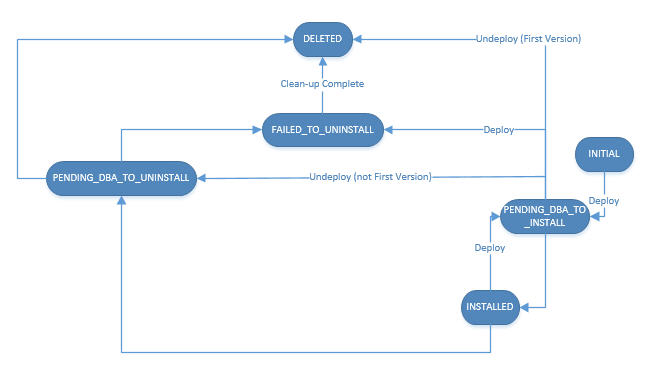Case Data Model Deployment Lifecycle
Case data models have a deployment lifecycle and states.
The deployment lifecycle means that you can deploy new versions and obtain UPDATE database scripts. Similarly, undeployment of the last remaining version of a deployed application creates the DROP scripts that you can use to remove the case data from the BPM database. See TIBCO ActiveMatrix BPM Deployment Guide for more information about application deployment lifecycles.
The case model state depends on where the case model is in the deployment lifecycle.
The following diagram shows the deployment lifecycle.
The following table describes the states a case model can have.
| State | Description |
|---|---|
| INITIAL | This describes the initial state of the case model. The case model is either still in the process of deploying or is undeployed. |
| PENDING_DBA_TO_INSTALL | The CREATE/UPDATE scripts are ready for retrieval. You must retrieve the scripts and manually execute them on your database to generate the case model database schema. If the first version of a case model is undeployed before the UPDATE scripts for a new version of the case model have been executed, then the case model’s state changes to PENDING_DBA_TO_UNINSTALL so the DROP scripts can be retrieved. |
| INSTALLED | The CREATE/UPDATE scripts have been executed and TIBCO ActiveMatrix BPM has been notified. |
| PENDING_DBA_TO_UNINSTALL | The DROP script is ready for retrieval. You must retrieve the scripts and manually execute them on your database to generate the case model database schema. |
| FAILED_TO_UNINSTALL | The scripts have not executed correctly on the database. You must clean-up your database and then notify TIBCO ActiveMatrix BPM when the clean-up is complete. |
| DELETED | The DROP script has been executed and the case model database tables deleted. |
Copyright © Cloud Software Group, Inc. All rights reserved.

